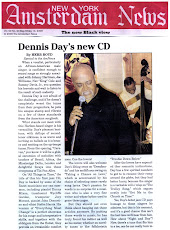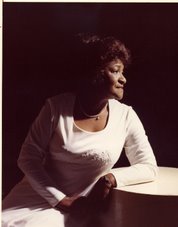For several decades, feminists, cultural and film critics have advanced the notion of a “male gaze.” This idea offers a useful construct for analyzing the case of Don Imus.
Gaze theory argues that European patriarchal entitlement encourages and allows white males the privilege of viewing women primarily as objects of male sexual spectacle. Women are positioned as defenseless under the penetration of the gaze and rendered powerless to reciprocate. They become passive recipients of voyeuristic pleasure derived by more powerful male onlookers. Those who possess the power to gaze are empowered to impute value to women on the basis of sexual appeal determined by subjective male sensory experience. The male gazer assesses a woman’s physical attributes and personal qualities in relation to what he deems sexually and visually pleasurable.
Historically in America, Caucasian women have been venerated atop the gaze’s pecking order and accorded the highest social esteem and worth. Conversely, black women have had to overcome a historical legacy of being commodified as chattel property during their enslavement.
The recent Don Imus incident offers a telling glimpse into the role assumed by the corporate mainstream media’s agents as enablers of the male gaze when black women, in particular, become its focus. Imus and Bernard McGuirk rendered a vivid, public example of the raw male gaze in action when they framed their post-game analysis in language referencing Rutgers’ Scarlet Knights as “hardcore hos,” “nappy-headed hos,” and “Jigaboos” (the latter a demeaning 19th-century slur for persons of African descent).
These racial and sexual insults conjure images of the auction block, where Southern slave masters leeringly examined the breasts of young potential concubines. The late singer-poet Oscar Brown Jr. brilliantly captures the brutal impact of the white male gaze in his classic recording “Bid ‘Em In,” a slave auctioneer’s narrative. Four hundred years ago, plantation owners and slave traders established a caste system that assigned levels of intrinsic value to black women based upon physique, skin tone, hair texture, and degrees to which these features were deemed suitably European or Caucasian.
After generations of legally sanctioned rape, a class of mixed-race “mulattos” emerged. Lighter complexioned black women were often granted privileges and physical proximity to the slave master’s resources as house servants, nannies, and mistresses. Such caste distinctions became a troubling source of tension, fostering divisions and complex social stratification among American blacks that linger today.
In the 18th century, President Thomas Jefferson, himself a slaveholder and founding father, would prove influential in fixing colonial America’s early patriarchal gaze and adding a racial aesthetic. Based upon the pseudo scientific understanding of the period, Jefferson attempted to explain physiological differences among African blacks and between the races. Writing in his Notes on Virginia in 1781, Jefferson argues:
“Whether the black of the negro resides in the reticular membrane between the skin and scarf-skin, or in the scarf-skin itself; whether it proceeds from the colour of the blood, the colour of the bile, or from that of some other secretion, the difference is fixed in nature, and is as real as if its seat and cause were better known to us. And is this difference of no importance? Is it not the foundation of a greater or less share of beauty in the two races?”
Jefferson further suggests that blacks themselves prefer what he called “the more elegant symmetry of form” and “superior beauty” that, in his view, distinguished the white race. From that time forward, spurious biblical interpretations and pseudo scientific claims enabled racist views to gain considerable currency.
By the middle 19th century Social Darwinism was widely accepted by America’s aristocracy, firmly evoking the idea of blacks as a lower form of human species. The patriarchal establishment appropriated Darwin’s thesis to bolster their view of white racial superiority, further reinforcing a social order to legitimize white male entitlement by supporting and institutionalizing a belief in racial segregation and the inferiority of nonwhite races as scientific fact.
In 1900, Charles Carroll’s best-selling book The Negro a Beast or In the Image of God? argued that blacks were classified as a species of ape and therefore had no soul. These racist ideas were widespread and used to justify the oppression and maltreatment of African descendants, who were viewed as sub-human, and to perpetuate the male gaze as the exclusive domain of white patriarchal privilege.
For blacks to return the gaze often meant swift retribution, so black codes of conduct forbade black males the privilege of the sexual gaze. Violation of this code precipitated hundreds of black lynchings and promulgated laws against interracial marriage only repealed in the last few decades. Daring to gaze at the white female form resulted in barbarous death, as in the 1955 case of 16-year-old Emmit Till, who was savagely murdered for allegedly looking and whistling at a southern white woman.
To this day these debunked racial myths have been slow to extinguish, and have shaped the racial disposition of many Americans towards blacks. The power of the white male gaze has historically contributed to entrenched racist attitudes and oppressive social policy in our national life.
Spike Lee’s film School Daze, which includes the sartorial musical number “Jigaboos vs. the Wannabes” to which Imus and friends referred, provides a context for viewing American racial attitudes. By dramatizing subtle aspects of caste and class distinctions among African Americans, Lee’s movie portrays ways in which racial and physical variation, such as skin color, hair texture, body type, and the contour and thickness of a woman’s hips and buttocks are still commonly used by the male gaze to ascribe value.
For black audiences, Imus’s glib remarks and smug attitude of white patriarchal supremacy are as iconic as the ten gallon hat he sports. Imus imposed a value judgment on black women whom he assumed could not return the gaze, and did so for the consumption of his 73% male audience. This should have been a moment of transcendence for women aspiring to achieve another step toward athletic parity in American sport, crowning their hard-won victories on the shoulders of women’s suffrage, Harriet Tubman, Ida B. Wells, the Civil Rights Movement, and promises of Title IX. Instead, a serious athletic contest was reduced to a mere beauty pageant.
Imus and McGuirk concluded that the Tenneessee Volunteers, led by stately Candace Parker and Sydney Spencer, were the “cuter” of the two teams. In a thinly veiled attempt at “humor,” they denigrated the Rutgers players as women flawed physically and morally – as promiscuous and androgynous, likening them to the NBA’s Raptors and Grizzlies.
But the Rutgers coach, Vivian Stringer, and her team stood up and dared to gaze back. By compellingly returning the gaze in a press conference, the Rutgers Scarlet Knights garnered so much public support that corporate media heads feared an unprecedented consumer and advertiser backlash from blacks – a multibillion dollar consumer constituency. Imus’s mindless attempt at racial parody was aptly perceived as a bigoted Freudian slip that would not easily be dismissed by the growing public outcry. So, with financial bottom lines at stake and fear of plummeting network ratings, neither CBS nor MSNBC, who profit hugely from the male gaze, had any choice but to finally banish Mr. Imus from the air waves after decades of his broadcasting the gaze with impunity.
The incident brought considerable attention to a question that was voiced repeatedly in the ensuing days by Imus supporters, bloggers, and media pundits seeking to be perceived as presenting “all sides” to keep audiences titillated. The question was: Why does the black community allow hip hop musicians and black comedians to use the same, and even more incendiary, language with impunity? And that question was always followed by a second: Why is the black community not outraged and not speaking out about these insults to women?
Media personalities like Imus and artists like Snoop Dog and 50 Cent are all extensions of the same corporate male gaze. Ultimately, they garner enormous profits for, and are personally enriched by, the same mainstream media establishment. Their relationship has been a profitable trade-off.
Like Imus, many hip hop and rap musicians are simply reflections of the attitudes of those with responsibility and privilege for creating and mediating the images and content that the public consumes. Media synergy is the glue that allows big media content providers in the network and cable television industry to earn staggering profits as producers, distributors, and promoters of the patriarchal male gaze, positioning women as “hos” and “bitches,” and black people as “niggas.”
Hip hop and rap music boasts higher sales among the 18-to-34-year-old white male demographic than any other musical genre. Corporate radio syndicates and record companies form a complex web of interlocking financial streams, each interdependent on the other, generating enormous profit margins. As long as the formula works, what is being lost or devalued goes unquestioned.
For over a decade, black leaders, including Al Sharpton and Jesse Jackson, have been speaking out and resisting the pernicious messages of conspicuous consumption and misogyny so prevalent in “gangsta rap” and other commercial art forms. But the perception that this is not the case stems from the fact that these protests have not received mainstream media attention, although they have been covered in the minority media. It is not in the financial interests of the large media entities to publicize serious moral criticism of their most profitable assets.
As long as greed, xenophobia, sexploitation, and racism are part of mainstream corporate media’s culture and are buoyed by a historical legacy of patriarchal privilege, rappers will continue to serve as an extension of the gaze. In the end, they may need to ask, reflexively, “Are we not the ones being pimped – out-hustled by our more powerful corporate allies?”
Heretofore impervious to social critique, these large media conglomerates have operated unchecked, uncensored, and unaccountable. Until now they have appeared unwilling to relinquish their exclusive birthright to define and impose the gaze. Locked in a symbiotic profitable arrangement with hip hop and rap artists and the outlets that promote them, each continues to benefit while innocent young black women become viciously stereotyped in America.
This may be slowly changing as women dare to return the gaze by exerting their considerable influence in shaping their own images and narrative as did the Rutgers team. In the end, perhaps the Imus affair has given us just the silver lining our nation so desperately needs – an authentic, long-overdue discussion of our racial legacy and its effects on our national future and well being.
©2007 D-Day Media Group, Inc.
Subscribe to:
Post Comments (Atom)












No comments:
Post a Comment